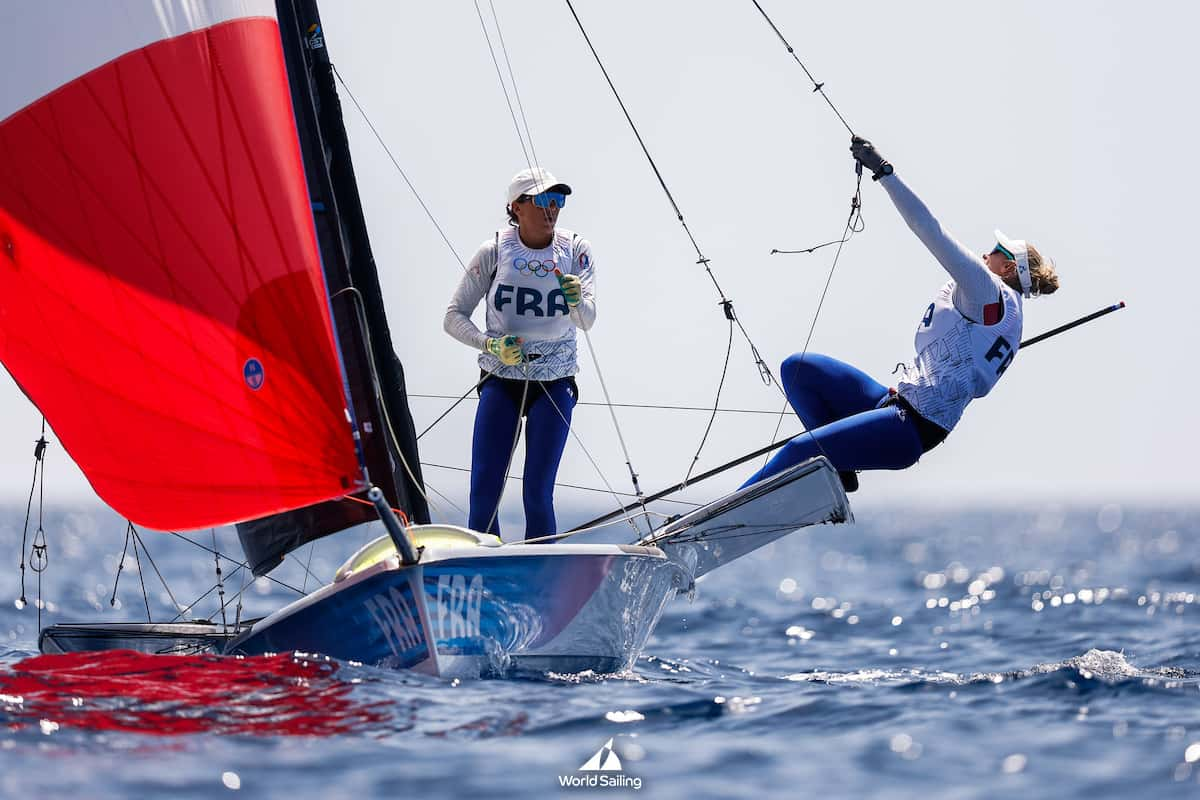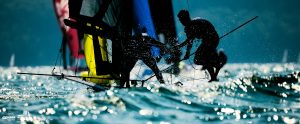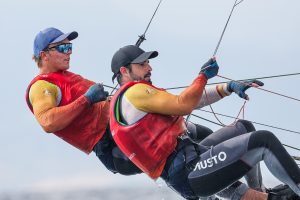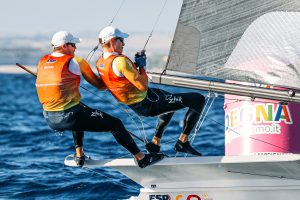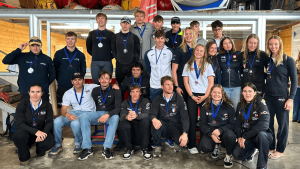It’s really hard to be world class across the whole wind range. That’s why the very best Olympic sailors enjoy competing in a whole variety of wind and wave conditions across the course of a five or six-day regatta, because it tends to weed out the specialists.
Some prefer light winds, others prefer strong, because the skill set required for each is very different.
Strong Wind
Strong wind requires cardiovascular fitness, muscular strength, speed of movement around the boat, great coordination and a degree of physical courage, especially in the skiff and foiling classes. You need to be able to keep sailing the boat at speed whilst looking around at your competitors and the rest of the race course to see how the wind is changing. Because the boats are moving quickly and often on collision course, speed of thought and quick reactions are vital.
Light Wind
Light winds, on the other hand, require a soft touch around the boat, cat-like movement that minimises any disturbance to the boat or the wind across the sails. It’s why many of the top sailors practise flexibility skills through yoga, pilates or something similar. Because the boats are moving slowly, there’s more time to think about the next move. The game of chess, the tactical boat-on-boat battles are critical, but so is finding clear air away from other boats. Light wind is lazy and always looks for the path of least resistance, so keeping away from the rest of the fleet to harness undisturbed wind is a key goal, but also easier said than done. It’s one of the reasons why the leader often manages to break away from the rest of the fleet.
The Women’s Skiff competition last week is another case in point. In the first couple of days of the Olympic Regatta in light breeze, France’s Sarah Steyaert and Charline Picon made the early running as they took on the leaders’ yellow bibs.

However when the breeze built up to full power conditions, with helm and crew trapezing off the wide wings of the 49erFX, it was the Swedish team Vilma Bobeck and Rebecca Netzler who came into their own. It pays for your body weight to be light in the light breeze, but to be heavier in the stronger winds because you have more righting moment, more leverage, to harness the power of the wind blowing across the sails. The Swedish crew are the tallest in the fleet and, combined with great technique, they generate consistently more boat speed around the race track once the wind is blowing 10 knots or more.
Dutch All-Rounders

Meanwhile there are the Dutch, Odile van Aanholt and Annette Duetz, who are great all-rounders. Pretty much as good as anyone in the lighter conditions, including the French, and better than most. In the stronger breeze, pretty much as good as the Swedish, but better than most and capable of winning races across the whole wind range.
In the end, it’s the ability to perform in the top three in all winds that generally wins championships. A year ago, Ruggero Tita and Caterina Banti probably had a bit of a weak spot in light winds. When they couldn’t get the Nacra 17 catamaran up on its foils, the Italians were still as fast as most, but they were still vulnerable.
Weakness into Strength
It was a weakness that they worked hard to eliminate over the past winter of training and when the Tokyo 2020 gold medallists won the 2024 World Championship at La Grande Motte in the south of France, it was a predominantly light airs week. It appeared that the Italians had ironed out the sub-foiling weakness without losing any of their advantage in the full foiling windier conditions.
That appears to be borne out so far in the Olympic Regatta, with Tita and Banti winning six of the first seven races and finishing second in the other. As the rest of the Nacra 17 fleet had feared, the Italians are now unstoppable in all conditions. Normally, an improvement in one area leads to a compromise in another, but in the case of these extraordinary Italians they appear to have a super strength in the light and strong conditions, and that’s a very rare thing at Olympic level.
written by Andy Rice


